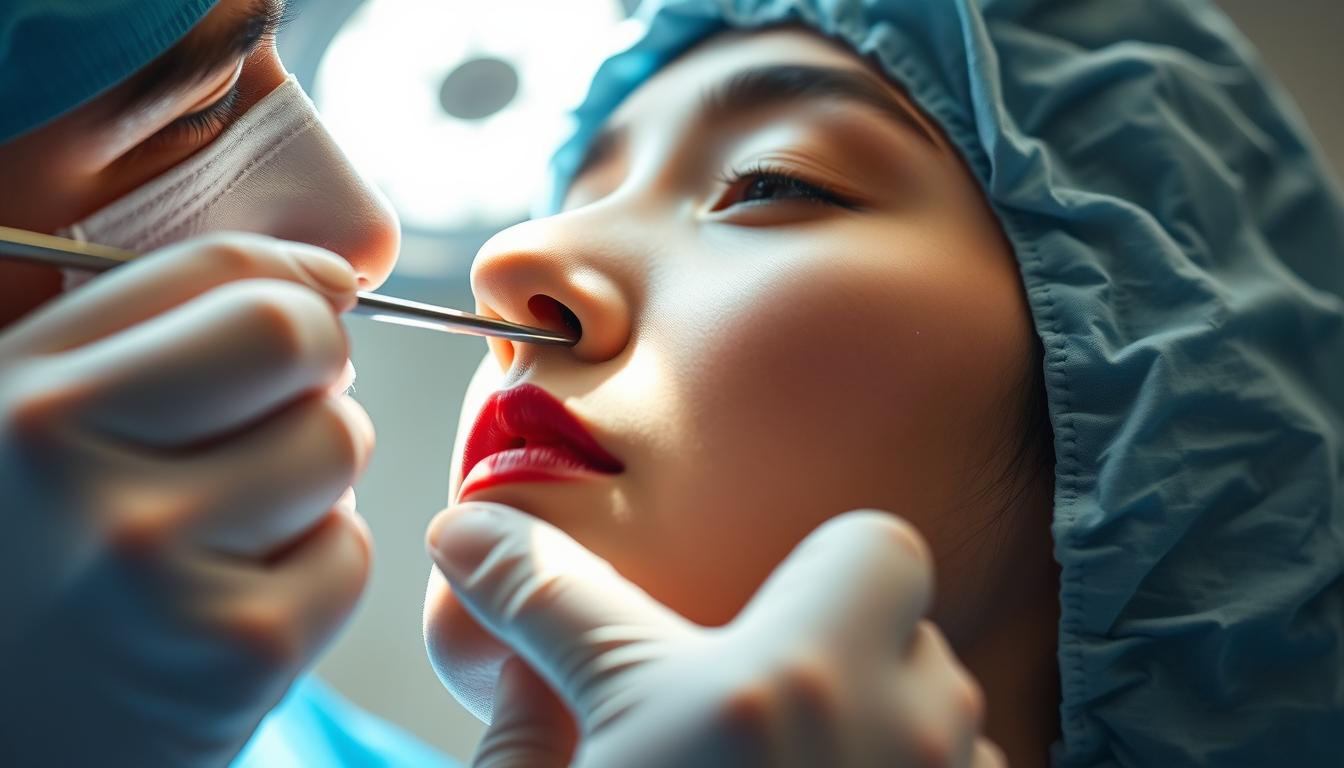South Korea has emerged as a global hub for nose surgery, attracting patients from around the world seeking advanced rhinoplasty procedures. The country’s reputation for excellence in plastic surgery is built on the expertise of its surgeons, who have developed specialized techniques catering to both Asian and Western facial features.
Korean surgeons focus on creating natural-looking results while maintaining facial harmony, making nose reshaping surgery a highly sought-after procedure. With a comprehensive approach to patient care, Korean clinics offer top-notch facilities and personalized services, ensuring a smooth recovery for patients.
Key Takeaways
- South Korea is a premier destination for rhinoplasty due to its advanced techniques and expertise.
- Korean surgeons specialize in creating natural-looking results that maintain facial harmony.
- The country’s clinics offer comprehensive patient care and personalized services.
- Rhinoplasty procedures in Korea cater to both Asian and Western facial features.
- Advanced technology and specialized expertise make Korean rhinoplasty unique.
Understanding Rhinoplasty in Korea
The art of rhinoplasty has seen a significant shift with Korean surgeons leading the way in innovative techniques. Rhinoplasty in Korea is not just about altering the nose; it’s about achieving facial harmony by considering the individual’s overall facial structure.
Why Korea Has Become a Global Hub for Nose Surgery
Korea’s rise as a global destination for rhinoplasty can be attributed to its advanced medical infrastructure, the specialized training of its surgeons, and a cultural emphasis on aesthetic enhancement. Korean plastic surgery clinics have developed a reputation for addressing Asian facial features while catering to international patients with diverse aesthetic goals.
The country’s surgeons analyze the ideal proportions between facial features to achieve optimal aesthetic outcomes. This approach ensures that the nose is in harmony with other facial features, creating balanced and natural-looking results.
The Korean Approach to Facial Harmony
The Korean approach to rhinoplasty considers the nose as part of the overall facial structure rather than an isolated feature. This holistic approach involves analyzing distinct characteristics and bringing out one’s beauty rather than creating an identical nose shape.
Korean rhinoplasty techniques have evolved to address both aesthetic concerns and functional issues, making it a comprehensive solution for patients seeking nose surgery. The ideal proportions between facial features, such as the forehead-eyebrows, eyebrows-nose, and nose-chin, are considered to achieve a harmonious face.
| Facial Feature | Ideal Proportion | Aesthetic Outcome |
|---|---|---|
| Forehead-Eyebrows | 1:1:1 ratio | Balanced facial structure |
| Eyebrows-Nose | Harmonious spacing | Natural-looking appearance |
| Nose-Chin | 1:1:1 ratio | Optimal aesthetic results |
Types of Rhinoplasty Procedures in Korea
The diversity in nasal shapes and concerns has led to the development of various rhinoplasty procedures in Korea, catering to the unique aesthetic goals of individuals seeking nasal surgery.
Korean surgeons are renowned for their expertise in performing a range of rhinoplasty procedures, each designed to address specific nasal characteristics and concerns. These procedures are tailored to enhance the overall facial harmony and aesthetic appeal of the nose.
Low Nose Correction
Individuals with a low nose often experience a flatter facial profile due to the lack of nasal projection. Low Nose Correction aims to add height and project the nose structure, thereby enhancing facial volume. This is achieved through the use of septal cartilages, rib cartilage, or silicone implants to create a more defined nasal profile.
Deviated Nose Surgery
A deviated nose can result from innate conditions or physical accidents during adolescence, leading to deformation in the nasal bone, lower cartilage, and septal cartilage. Deviated Nose Surgery addresses both aesthetic and functional issues, often utilizing techniques like Septoturbinoplasty to correct nasal deviations and improve breathing.
Droopy (Long) Nose Reshaping
A droopy or long nose is characterized by a ptotic nasal tip due to weak cartilage structures. Droopy Nose Reshaping focuses on reconstructing the lower lateral cartilage and columella structure to achieve a balanced nose length and improve the angle between the nasal tip and lips.
Hump Nose Reduction
Hump Nose Reduction involves the removal of nasal humps, followed by osteotomy to slim down the nose width, and reshaping to create a smooth profile line. This procedure is designed for individuals with a protruded nose bridge, wide nasal bone, and droopy nasal tip.
Bulbous Nose Refinement
Bulbous Nose Refinement is a procedure that addresses wide, thick nose tips by removing excess nasal tip fat tissues, reducing partial nasal tip cartilage, and sometimes performing alar reduction when necessary. This technique is particularly relevant for individuals with Asian noses characterized by large nasal tip fibrofatty tissues or thick nasal skin.
In conclusion, the variety of rhinoplasty procedures available in Korea underscores the country’s position as a leading destination for individuals seeking personalized nose surgery. By understanding the specific concerns and nasal characteristics of each patient, Korean surgeons can tailor their approach to achieve optimal aesthetic and functional outcomes.
The Rhinoplasty Korea Experience
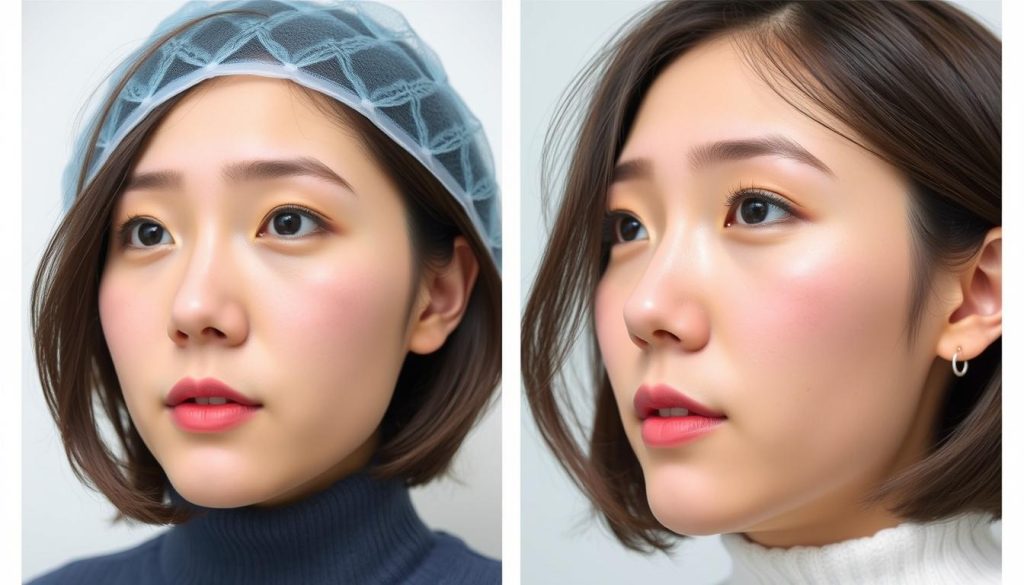
Korean rhinoplasty clinics offer a holistic experience, combining advanced surgical techniques with personalized patient care. This comprehensive approach ensures that patients receive tailored treatment plans that address their unique nasal concerns and aesthetic goals.
Initial Consultation Process
The journey to a refined nose shape begins with a thorough initial consultation. During this session, patients undergo a detailed facial analysis, including 3D imaging, to assess their nasal structure and discuss their desired outcomes with a skilled surgeon. This process allows for a customized surgical plan that considers the patient’s facial structure, skin thickness, and cartilage strength.
Customized Surgical Planning
Once the consultation is complete, the surgeon develops a personalized surgical plan. This plan is designed to achieve the patient’s aesthetic goals while ensuring a natural-looking result that complements their face. The use of advanced techniques and state-of-the-art technology enables the surgeon to perform the procedure with precision, minimizing recovery time and optimizing the outcome for the patient.
Throughout the process, clear communication is maintained between the patient and the clinic, with services such as translation and virtual consultations available to accommodate international patients. Pre-operative preparation guidelines are also provided to ensure the patient is well-prepared for the surgery, including necessary medical tests and dietary restrictions.
Top Rhinoplasty Clinics in Korea
For those seeking rhinoplasty, Korea offers a compelling combination of advanced medical technology and highly skilled surgeons. The country has become a hub for cosmetic surgery, attracting international patients from around the world.
THEPLUS Plastic Surgery
THEPLUS Plastic Surgery in Gangnam, Seoul, is renowned for its exceptional rhinoplasty services. Led by Dr. Kim Taek Kyun, the clinic is recognized for its comprehensive approach to patient care and innovative research on 3D implants.
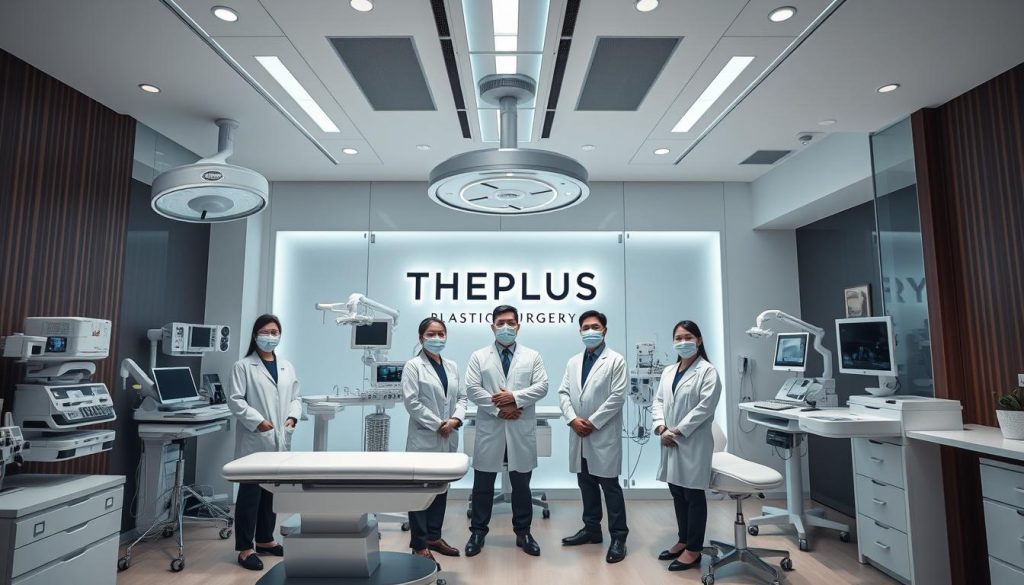
Made Young Plastic Surgery
Made Young Plastic Surgery Clinic, located in Seoul’s Gangnam district, is a leading institution in aesthetic and rejuvenative plastic surgery. The clinic is known for its commitment to safety and excellence, combining traditional beauty ideals with state-of-the-art techniques.
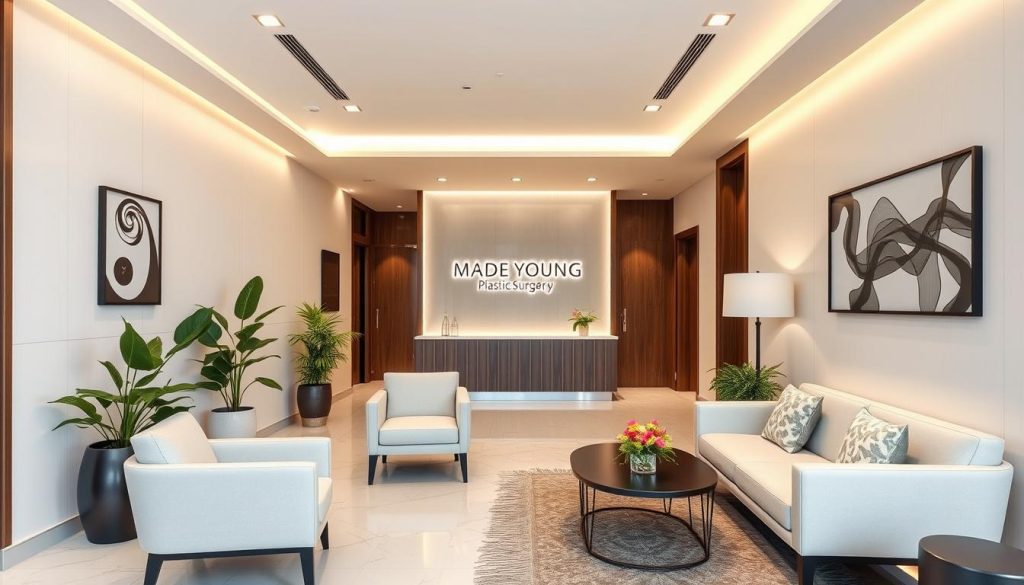
Okay Plastic Surgery Clinic
Okay Plastic Surgery Clinic stands out as a premier destination for rhinoplasty and other aesthetic procedures. The clinic prioritizes individualized care, offering a transformative approach to nose reshaping and refinement.
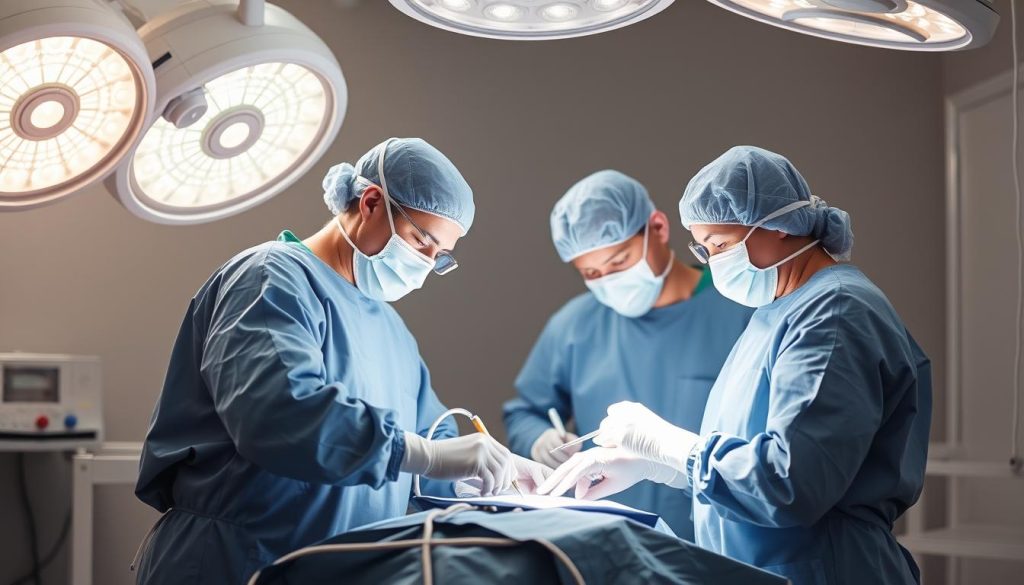
These top rhinoplasty clinics in Korea cater to both local and international patients, providing specialized services such as translation assistance, accommodation arrangements, and comprehensive aftercare programs. Their commitment to excellence and patient satisfaction has made Korea a preferred destination for rhinoplasty.
World-Class Korean Rhinoplasty Surgeons
Korea is home to some of the world’s most renowned rhinoplasty surgeons, known for their exceptional skill and innovative techniques. These surgeons have not only mastered the art of nose reshaping but have also contributed significantly to the advancement of rhinoplasty through their research and participation in international conferences.
Dr. Kim Taek Kyun’s Innovative Techniques
Dr. Kim Taek Kyun, a board-certified plastic surgeon, is celebrated for his groundbreaking work in rhinoplasty and facial contouring. His innovative research on 3D implants has garnered international recognition, and his approach focuses on achieving a harmonious balance of facial features to enhance natural beauty. By employing cutting-edge techniques, Dr. Kim ensures that his patients receive the most advanced care, resulting in aesthetic improvements that are both subtle and significant.

Dr. Jeong Jae Yong’s Expertise in Functional Rhinoplasty
Dr. Jeong Jae Yong, as the President of the Korean Society of Plastic Surgeons, brings a wealth of knowledge and experience to the field of rhinoplasty. His expertise lies in functional rhinoplasty, where he skillfully combines aesthetic enhancement with improved nasal function. This dual approach ensures that each procedure not only beautifies the nose but also enhances its functionality, providing patients with both form and function.
Both Dr. Kim and Dr. Jeong have established themselves as leaders in the field of rhinoplasty, attracting patients from around the globe. Their commitment to advancing surgery techniques and their patient-centered approaches have set a new standard in the industry, making Korea a hub for those seeking high-quality nose surgery.
| Surgeon | Specialty | Notable Achievement |
|---|---|---|
| Dr. Kim Taek Kyun | Rhinoplasty and Facial Contouring | Innovative research on 3D implants |
| Dr. Jeong Jae Yong | Functional Rhinoplasty | President of the Korean Society of Plastic Surgeons |
Benefits of Choosing Korea for Your Rhinoplasty
As a global leader in cosmetic surgery, Korea offers an unparalleled rhinoplasty experience, combining advanced technology with artistic expertise. The country’s reputation for delivering exceptional results is built on its innovative techniques, comprehensive patient care, and state-of-the-art facilities.
Advanced Medical Technology and Facilities
Korea’s clinics are equipped with cutting-edge medical technology, ensuring precise and safe outcomes for patients undergoing rhinoplasty. The use of 3D imaging and simulation allows individuals to visualize their post-surgery appearance, enabling them to make informed decisions about their procedure.
Many clinics in Korea boast state-of-the-art facilities, including specialized surgical instruments and innovative materials that contribute to successful surgical outcomes.
Specialized Expertise in Asian Aesthetics
Korean surgeons are renowned for their specialized expertise in Asian aesthetics, which enables them to create natural-looking results that harmonize with diverse facial features while respecting ethnic characteristics. Their extensive experience in performing rhinoplasty procedures on patients with varying nasal structures and aesthetic goals ensures that each individual receives personalized care.
According to Dr. Kim Taek Kyun, a leading rhinoplasty surgeon in Korea, “Understanding the unique aesthetic preferences of our patients is crucial in delivering results that meet their expectations.”
Comprehensive Aftercare Services
Korean clinics are well-regarded for their comprehensive aftercare services, which include regular follow-up appointments, detailed post-surgery instructions, and access to support services. This ensures that patients receive continuous care throughout their recovery process.
The emphasis on comprehensive aftercare not only enhances the overall patient experience but also contributes to optimal results and patient satisfaction.
By choosing Korea for rhinoplasty, international patients can benefit from a seamless experience, from initial consultation to post-surgery recovery, thanks to the country’s robust medical tourism infrastructure.
Cost of Rhinoplasty in Korea
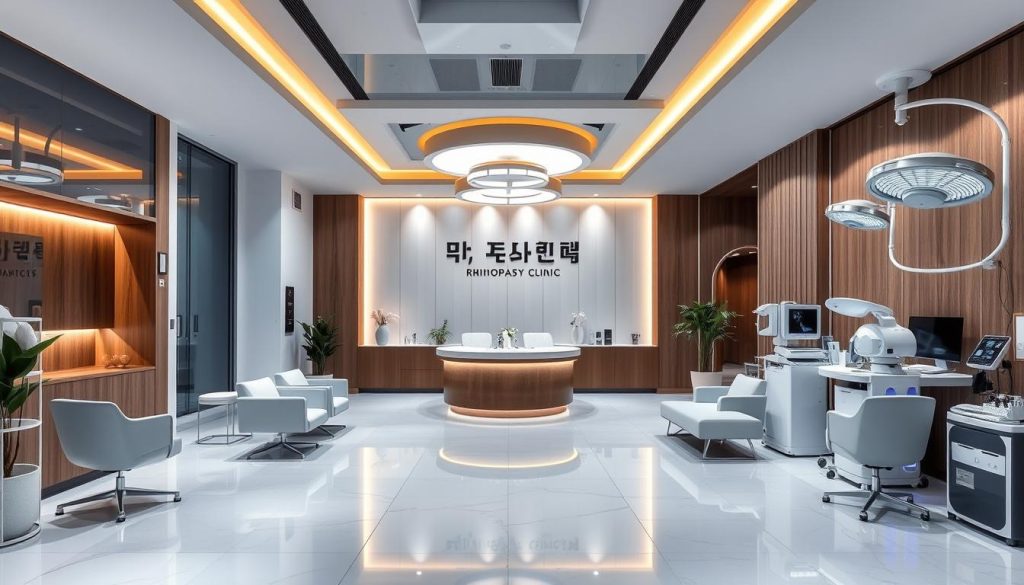
Understanding the cost of rhinoplasty in Korea is crucial for prospective patients. The cost can vary widely depending on several factors such as the complexity of the nose surgery, the reputation of the surgeon, and the specific clinic chosen.
Basic Procedure Pricing
A straightforward nose job typically starts at approximately 3,000,000 won ($2,600 USD). The basic procedure pricing for rhinoplasty in Korea ranges from $2,600 to $4,300 USD for procedures such as tip refinement, minor bump smoothing, or subtle reshaping of the nasal bridge.
Advanced Technique Costs
For more complex procedures, costs can escalate to anywhere from 5,000,000 won ($4,300 USD) to over 15,800,000 won ($14,000 USD). These advanced techniques involve extensive reshaping, structural adjustments, or the use of specialized materials like rib cartilage.
Cost Comparison with the United States
In comparison, the cost of rhinoplasty in the United States tends to be significantly higher, typically ranging from $5,000 to $15,000. This does not always include additional fees such as anesthesia, operating room costs, and post-operative care. Patients can achieve significant cost savings, often 30-50%, by choosing Korea for their nose surgery without compromising on quality or results.
Additional costs to consider when planning rhinoplasty in Korea include travel expenses, accommodation, post-operative medications, and follow-up appointments. Prospective patients should factor these into their overall budget to ensure a smooth and successful surgery experience.
The Rhinoplasty Procedure Explained
The rhinoplasty procedure, whether open or closed, involves a series of precise steps to achieve the desired nasal shape. This complex surgery requires a thorough understanding of the techniques and processes involved to ensure a safe and effective experience.
Pre-Surgical Preparation
Before undergoing rhinoplasty, patients must prepare themselves through various medical tests, dietary adjustments, and mental preparation. This phase is crucial for optimal surgical outcomes. Necessary tests may include blood work and imaging studies to assess the nasal structure, including bone and cartilage. Patients are advised on dietary restrictions and medication guidelines to minimize risks during surgery.
During the Surgery
The rhinoplasty procedure begins with the administration of general anesthesia or local anesthesia with sedation, depending on the complexity of the case and patient preference. The surgeon then makes precise incisions, either inside the nostrils for closed rhinoplasty or including a small incision on the columella for open rhinoplasty. The nasal structure is reshaped by sculpting cartilage and, if necessary, bone, to achieve the desired nose shape. Any deviated septum is corrected during this phase.
Anesthesia Options
Korean clinics offer various anesthesia options to ensure patient comfort during surgeries. General anesthesia is commonly used for rhinoplasty, allowing patients to remain unconscious throughout the procedure. In some cases, IV sedation may be used in conjunction with local anesthesia, providing a relaxed state without full unconsciousness. The choice of anesthesia depends on the patient’s health, the complexity of the surgery, and the surgeon’s professional judgment.
Advanced techniques such as 3D imaging and computer-assisted planning are often incorporated into the rhinoplasty procedure to achieve precise and predictable results, ensuring that the final nose shape meets the patient’s expectations while maintaining harmony with other facial features.
Recovery and Aftercare Following Korean Rhinoplasty
Understanding the recovery process is vital for patients who have undergone rhinoplasty in Korea to achieve the desired results. The recovery period is crucial for healing and minimizing potential complications.
Immediate Post-Surgery Care
After surgery, patients are advised to rest in bed with their head elevated above their chest to reduce swelling and minimize bleeding. Applying an ice pack for 4 days post-rhinoplasty helps in reducing swelling. It’s also recommended to use high-level pillows for 5 days after the surgery to avoid a flat sleeping position.
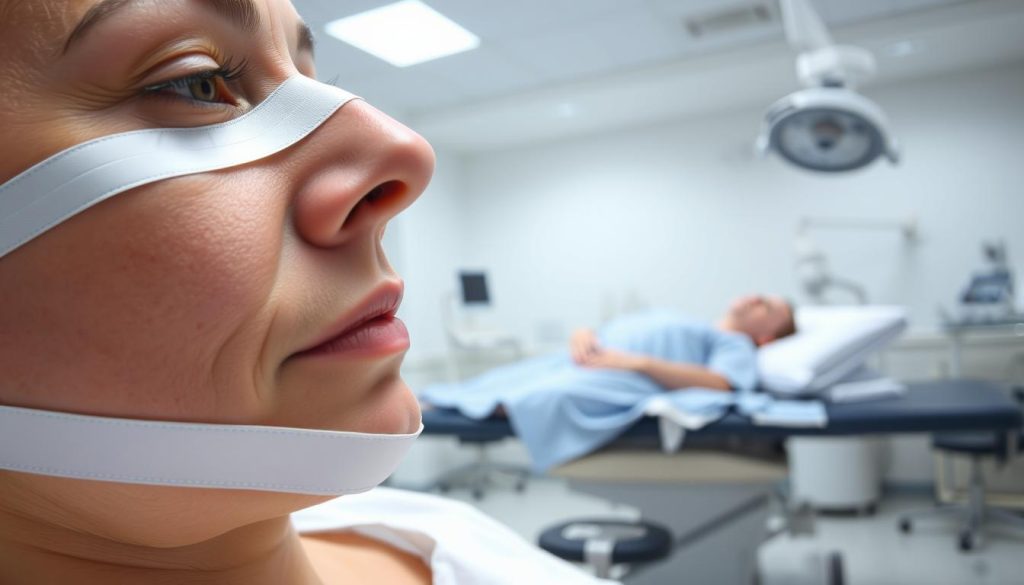
Managing Swelling and Bruising
Managing swelling and bruising is a key aspect of the recovery process. Using cold compresses, taking arnica supplements, staying hydrated, and avoiding salt and alcohol can help minimize inflammation. These strategies are part of comprehensive post-operative care that Korean clinics emphasize.
Long-Term Healing Timeline
Most swelling subsides within a year after rhinoplasty. The nose continues to refine and settle into its final shape over this period. Patients are advised to avoid intense activities or exercises for 8 weeks after the surgery to ensure proper healing of the nose and surrounding skin.
By following these guidelines and the comprehensive aftercare services offered by Korean clinics, patients can ensure a smooth and effective recovery process. Regular follow-up appointments, specialized skincare treatments, and dedicated support for international patients are part of the care provided.
Planning Your Medical Tourism Trip to Korea
A successful rhinoplasty experience in Korea begins with thorough trip planning. International patients should consider several factors to ensure a smooth and successful recovery process.
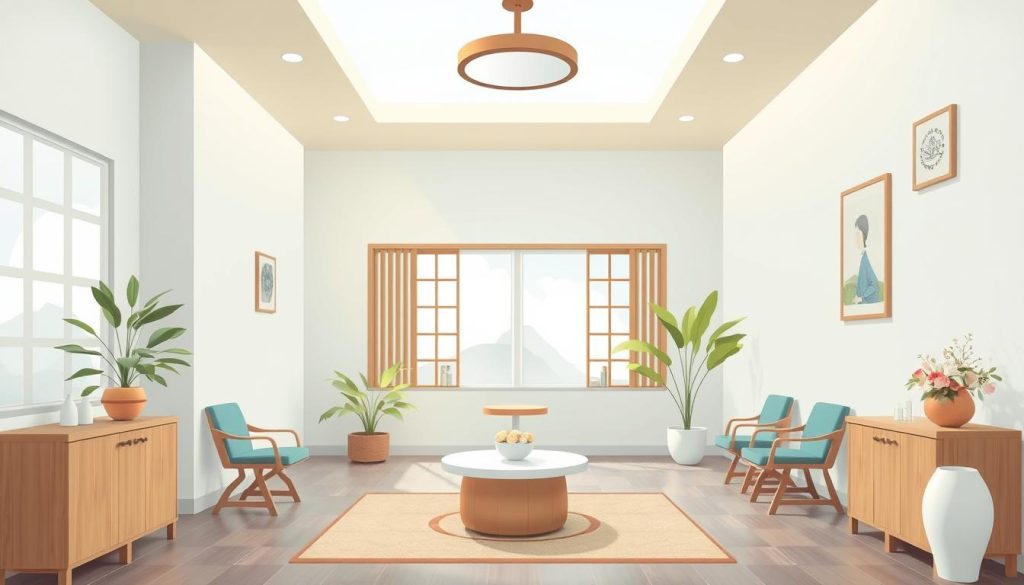
Recommended Length of Stay
The ideal length of stay in Korea for rhinoplasty varies depending on the type of nose surgery performed. Generally, a stay of 12-14 days is recommended to allow for pre-operative consultation, the surgery itself, and sufficient recovery time before flying home.
Accommodation Options Near Top Clinics
Many top clinics in Seoul offer comprehensive medical tourism packages that include accommodation options near the clinic. Patients can choose from specialized medical tourism hotels, serviced apartments, or standard hotels with amenities conducive to recovery.
Navigating Seoul During Recovery
Seoul is a city designed with technology and convenience in mind, making it relatively easy for international patients to navigate during their recovery. Many clinics offer transportation services, and there are numerous delivery options for meals and pharmacy needs.
By understanding the procedure and planning accordingly, international patients can have a successful rhinoplasty experience in Korea.
Potential Risks and How Korean Clinics Address Them
While rhinoplasty can significantly enhance one’s appearance, it’s crucial to understand the potential risks involved. Any surgical procedure, including rhinoplasty, carries certain risks that patients should be aware of. This knowledge helps in making informed decisions about undergoing surgery.
Common Complications in Rhinoplasty
Rhinoplasty, like other surgeries, can result in complications such as infection, bleeding, asymmetry, breathing difficulties, and unsatisfactory aesthetic results. In some cases, revision surgery may be necessary to address these issues. Korean clinics acknowledge these potential complications and have measures in place to mitigate them.
Safety Standards in Korean Plastic Surgery
Korean plastic surgery clinics maintain stringent safety standards, including board-certified surgeons, accredited facilities, comprehensive pre-operative screening, and advanced sterilization protocols. These measures significantly reduce the risk of complications during and after surgery. By choosing a reputable clinic, patients can minimize their exposure to potential risks associated with rhinoplasty.
Top Korean clinics also employ meticulous surgical planning, advanced imaging technology, and personalized approaches to further reduce risks. The use of a patient’s own tissues instead of artificial implants is another strategy to lower the risk of complications. By understanding these safety measures, patients can feel more confident in their decision to undergo rhinoplasty in Korea.
Choosing Between Natural and Artificial Materials
When it comes to rhinoplasty, one of the most critical decisions patients must make is choosing between natural and artificial materials for their nose surgery. The choice between these materials can significantly impact the outcome and longevity of the procedure.
Silicone Implants vs. Autologous Tissues
Silicone implants are commonly used in rhinoplasty for their ease of use and immediate results. However, they can lead to complications such as skin reddening, contraction, and thinning, especially in patients with short nose types. On the other hand, autologous tissues, including septal cartilage and rib cartilage, are considered safer and more natural alternatives. Dr. Lee, a pioneer in rib cartilage rhinoplasty, advocates for using autologous tissues for a more natural and safe outcome.
Rib and Ear Cartilage Grafting Techniques
Rib cartilage grafting is particularly useful for complex cases and revision rhinoplasty, providing significant structural support. Ear cartilage grafting is used to refine the nasal tip and strengthen the nasal structure. Dr. Lee Myung Ju utilizes ear cartilage, tissue, and skin wholly to maximize the patient’s nose condition during revision rhinoplasty, showcasing the versatility and benefits of autologous tissue grafting techniques.
| Material | Benefits | Limitations |
|---|---|---|
| Silicone Implants | Easy to use, immediate results | Risk of complications like skin reddening and contraction |
| Autologous Tissues (Septal Cartilage, Rib Cartilage) | Natural look, safer, less risk of complications | More complex procedure, requires skilled surgeon |
| Ear Cartilage | Refines nasal tip, strengthens nasal structure | Limited availability, requires precise harvesting technique |
The choice between natural and artificial materials in rhinoplasty depends on various factors, including the patient’s nasal structure, the complexity of the procedure, and the surgeon’s expertise. By understanding the benefits and limitations of each material, patients can make informed decisions about their rhinoplasty.
Making Your Final Decision for Rhinoplasty in Korea
As you consider rhinoplasty in Korea, it’s essential to weigh your options carefully. With numerous top-notch clinics and experienced surgeons, Korea has become a hub for nose surgery. Prospective patients must consider several factors to make an informed decision.
When researching clinics and surgeons, it’s crucial to review before-and-after photos, read patient testimonials, and verify credentials. Scheduling consultations with multiple surgeons can also provide valuable insights into their approach and expertise. This thorough research helps patients set realistic expectations for their rhinoplasty results.
Timing is another critical factor. Patients should consider their personal readiness, including their health status and emotional preparedness, as well as practical considerations like their work schedule and social commitments. Understanding the recovery timeline and potential complications is also vital.
To ensure confidence in their decision, patients should prepare a checklist of questions to ask during their consultation. This should include inquiries about the surgical approach, material choices (such as silicone implants or autologous tissues), recovery process, potential risks, and total costs. By carefully considering these aspects, individuals can make an informed decision about undergoing rhinoplasty in Korea.
Ultimately, the goal of rhinoplasty is to achieve a harmonious nose shape that enhances one’s facial aesthetics. With careful planning and the right surgeon, many people can achieve their desired results.
FAQ
What is the typical recovery time for septal cartilage rhinoplasty?
The recovery time can vary, but generally, patients can expect to return to their normal activities within 1-2 weeks. However, it may take several months for the nose to fully settle into its new shape.
How is alar reduction performed during a nose surgery?
Alar reduction is a technique used to reduce the size of the nostrils. It is typically performed by removing a small portion of the alar cartilage and reshaping the remaining tissue to achieve a more balanced appearance.
What are the benefits of using general anesthesia for rhinoplasty procedures?
General anesthesia ensures that the patient remains comfortable and pain-free during the surgery. It allows the surgeon to perform the procedure without any interruptions or patient discomfort.
Can revision rhinoplasty be performed to correct previous nose surgery results?
Yes, revision rhinoplasty is a surgical procedure aimed at correcting or revising the results of a previous nose surgery. It requires a high level of expertise and is typically performed by experienced surgeons.
How do Korean plastic surgeons ensure a natural-looking nose shape?
Korean plastic surgeons often use advanced techniques and materials, such as autologous tissues or silicone implants, to achieve a natural-looking nose shape that complements the patient’s facial features.
What is the role of nasal tip refinement in rhinoplasty?
Nasal tip refinement is a critical aspect of rhinoplasty, as it can greatly impact the overall appearance of the nose. Surgeons use various techniques to refine the nasal tip, including cartilage grafting and reshaping.
Are international patients able to receive post-operative care in their home country?
Many Korean clinics provide comprehensive aftercare services, including instructions and support for international patients to follow in their home country. However, it’s essential to discuss post-operative care plans with the clinic before the surgery.
How is the shape of the nose determined during the initial consultation?
During the initial consultation, the surgeon will assess the patient’s nasal structure and discuss their aesthetic goals to determine the ideal shape of the nose. Computer imaging and other tools may be used to visualize the potential outcome.
What are the advantages of using rib cartilage for grafting in rhinoplasty?
Rib cartilage is a popular choice for grafting in rhinoplasty due to its strength, durability, and ability to provide a natural-looking result. It can be used to augment the nasal bridge, tip, or other areas.
